Process approach in business management
The process approach to business management involves gathering all the activities performed in an organization into sets called processes, which are constantly modified and improved to achieve the most optimal results for the moment.
This strategy is particularly relevant in the context of manufacturing companies that implement lean methodologies (lean manufacturing and lean management).
Controlling the processes allows not only for efficient execution, but also for ongoing analysis for weight loss. Thus, it can be said that an organization cannot be lean without maximally lean processes.
The most important factors in the process approach
Process-oriented companies measure the three factors, both in the context of all their processes individually and their collection as a whole of the organization’s activities:
The biggest advantages of the process approach to managing a manufacturing company
The implementation of process management of a manufacturing enterprise brings with it a number of advantages and benefits. These include:
What is a BPMS (Business Process Management System)?
Find out what benefits a BPMS can bring to your business.
BPMS stands for “Business Process Management Software” or “Business Process Management System.” BPMS is a tool for implementing a management methodology to improve an organization’s business processes by identifying, modeling, automating, analyzing and measuring performance.
A key advantage of BPMS is that its users have the opportunity to take an active role in improving business processes through simple and intuitive tools. All of this is made possible by three components: means for process construction, process execution (platform) and monitoring (process library).
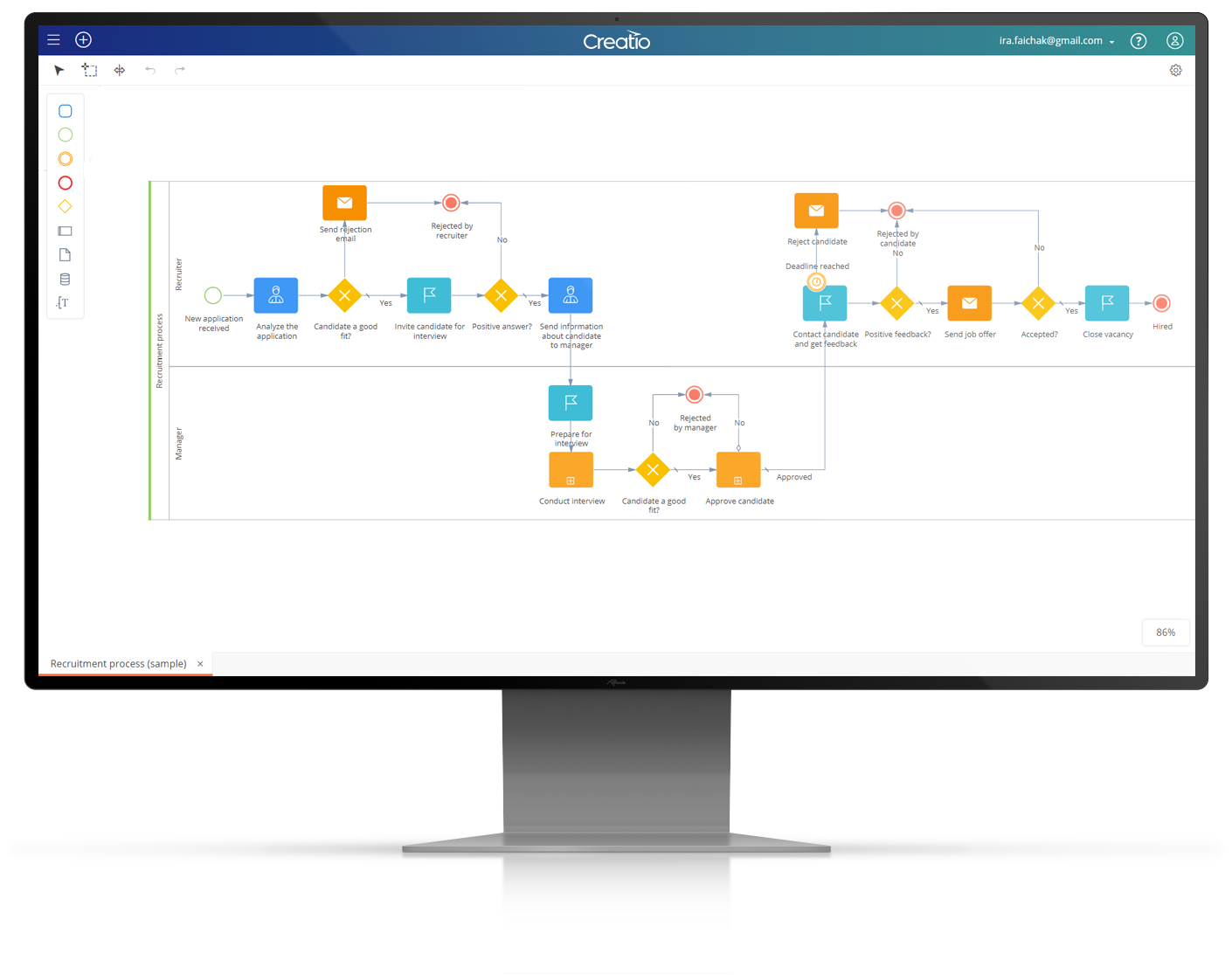
The concept of business process modeling
With business process modeling, workflows or business procedures can be easily represented graphically. The use of data flow diagrams and flow charts helps identify potential improvements.
Using business process (BP) modeling, two different states can be mapped, such as the current state of a process (known as the AS-IS state) and its future state after improvements or changes are made (known as the TO-BE state). However, it should be emphasized that process modeling is best done in the context of the IT solutions that support it. This will help avoid later, costly castomization of IT solutions.
The main benefits of process modeling include: improving the efficiency of process execution through standardization and use of best practices, enabling process management with identification of those responsible for effective process execution, facilitating the adaptation of new employees to the organization, or enabling monitoring of process execution.
It is also worth ensuring that BPMS software supports recognized process modeling standards. Leading standards (so-called notations) include, for example. BPMN 2.0 (more on this below).
Stages of the process approach
KEY FEATURES OF THE BUSINESS PROCESS MANAGEMENT SYSTEM ON THE EXAMPLE OF CREATIO’S SOLUTION
Configuration
Creatio helps solve a variety of business issues – from managing employee profiles and consolidating all customer data in one environment to streamlining multi-channel communication with customers. In addition, managing daily tasks and activities is easier with integration with Google Calendar and MS Exchange.
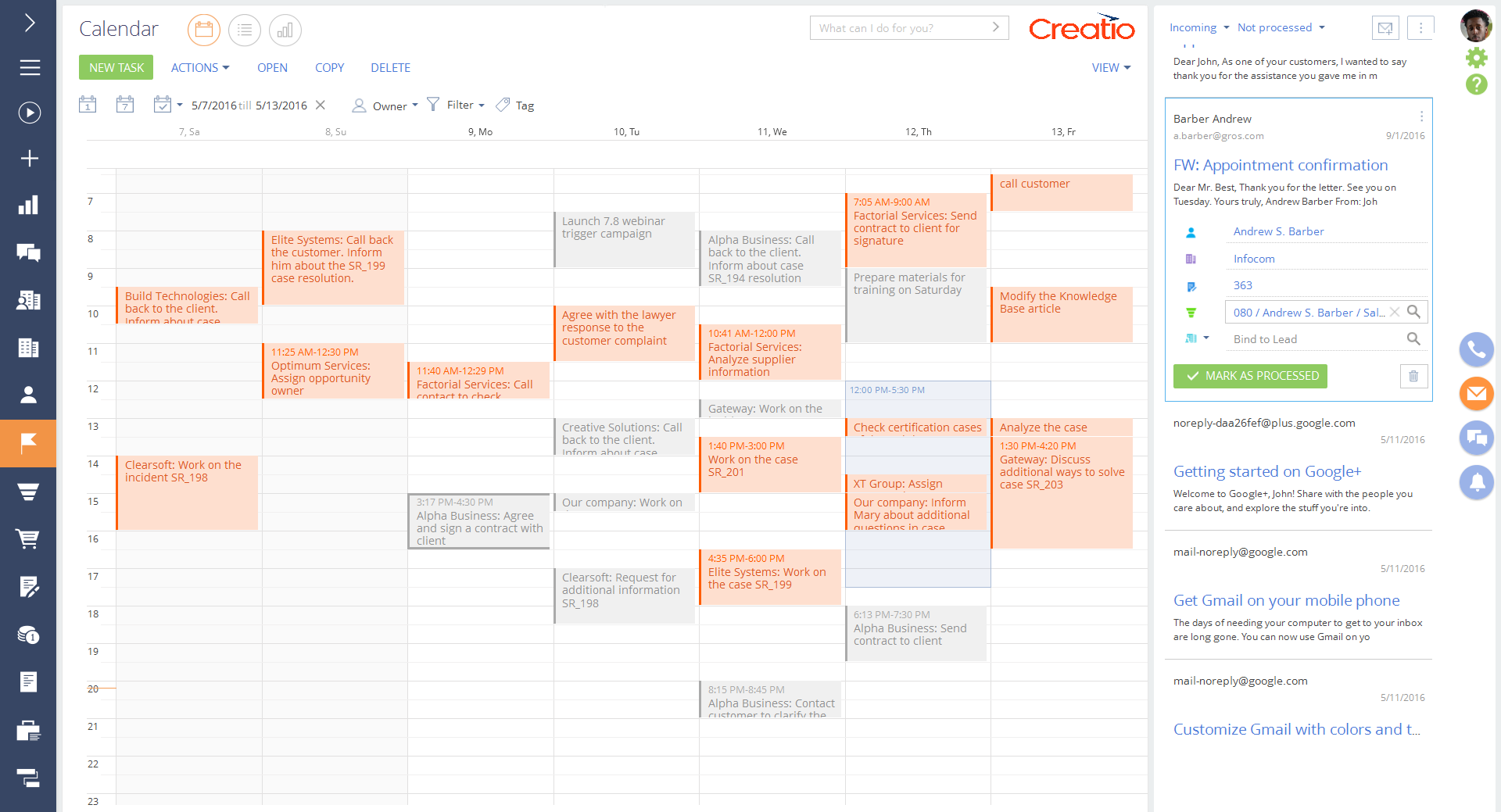
Process monitoring
BPM solutions are more than just modeling and automating the execution of business processes. An equally important function of this class of systems is the monitoring and in-depth analytics of all business processes in the company. In addition, monitoring processes, identifying and eliminating process bottlenecks, optimizing them based on these indicators is the most complex task. System tools allow for relevant information and more accurate process measurement. In the Creatio system, such a tool is the process log (log). With the availability of a process log, any performance metric can be tracked and this data can be visualized using cockpits.
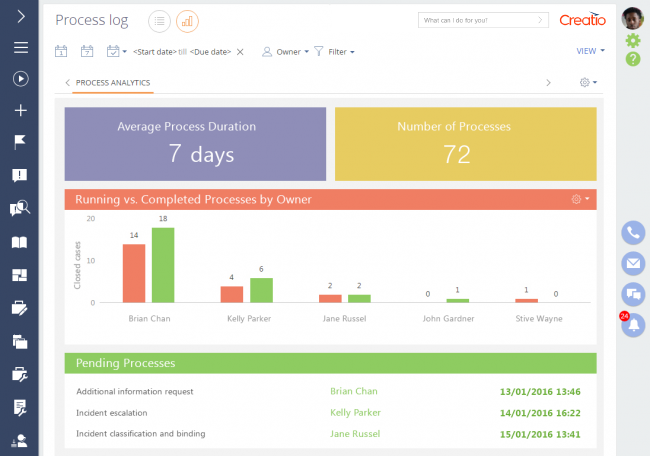
Process design and execution
Creatio enables automation to streamline any business process to achieve desired results faster. An intuitive process builder allows users without IT knowledge to easily create business processes. All of Creatio’s processes are stored in a process log, allowing them to be effectively analyzed using any metrics.
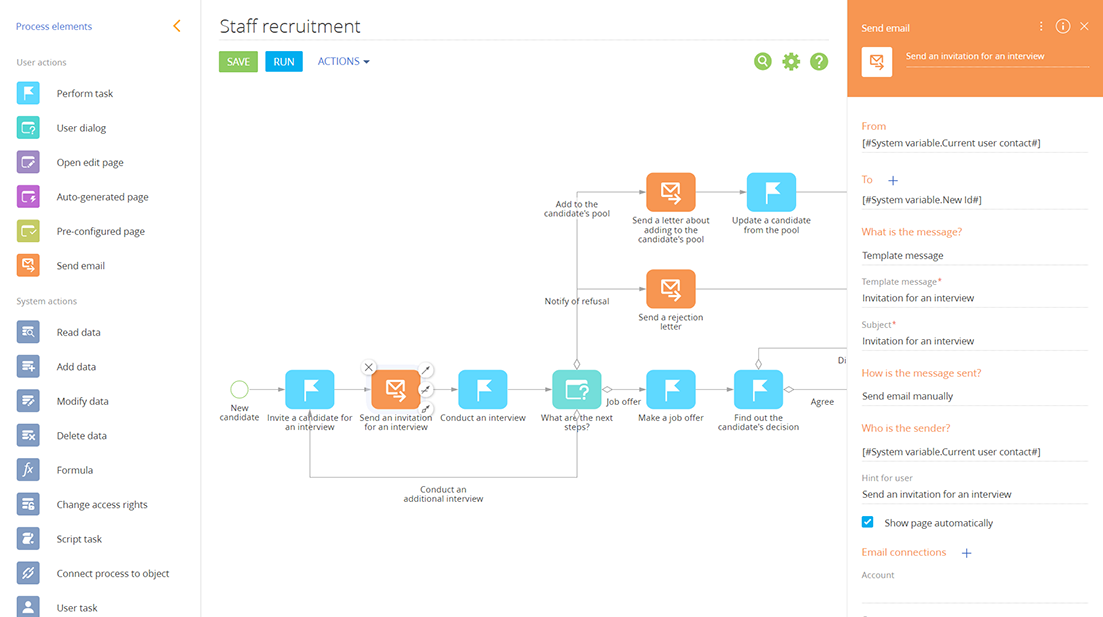
Dynamic Case Management
Dynamic Case Management (DCM) is a software-based approach to managing, streamlining and automating operational processes. DCM provides users with the ability to manage unstructured processes. Users are able to easily change, delete or add necessary steps and stages. With the help of a case engine, the system suggests the next steps needed to achieve the best results from the process.
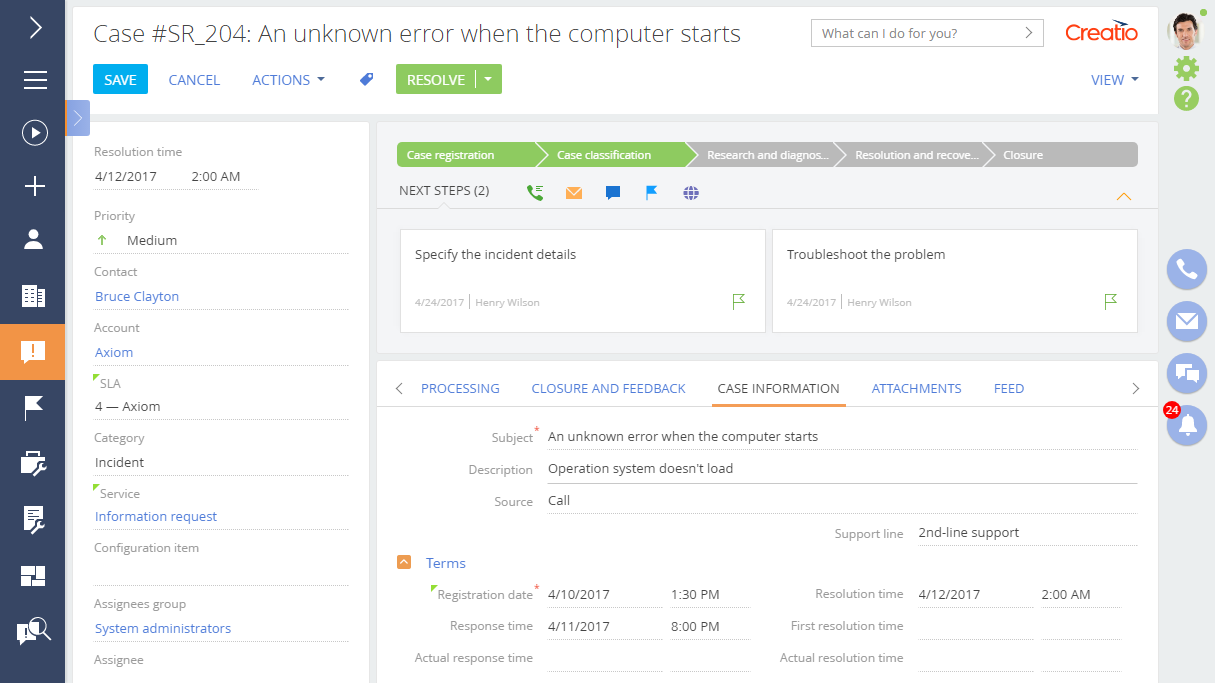
Ready-to-use process library
Creatio comes with an off-the-shelf process library – a convenient platform where a company can store an accurate diagram of the organization’s workflow and processes. Workflows are available for teams from different departments and provide detailed instructions on how to carry out a particular procedure from start to finish. Processes can also be modified as needed to fit the changing needs of the company.
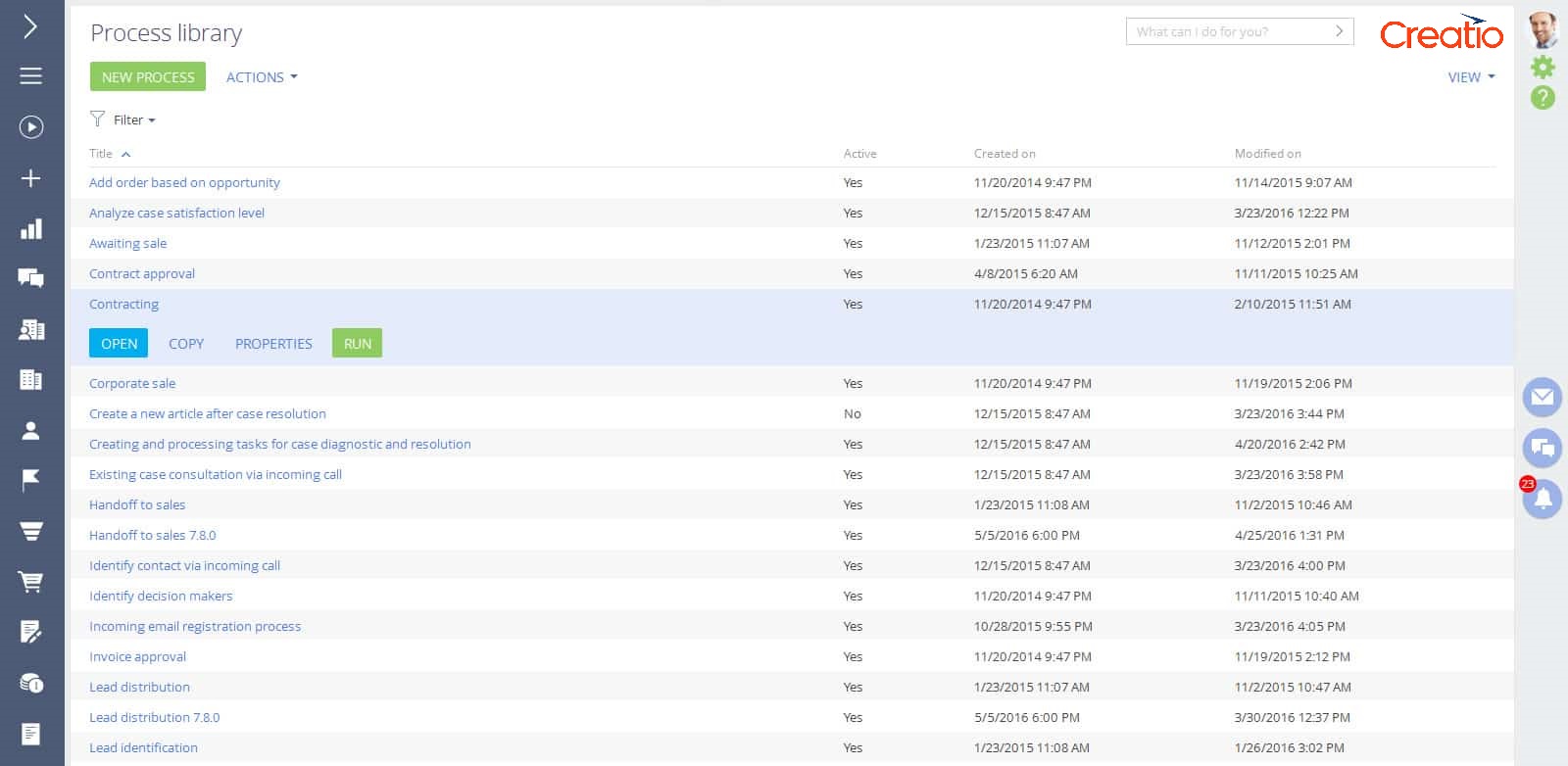
BPMN support
BPMN (Business Process Modeling Notation) is a visual modeling language for representing business processes. BPMN is derived from a synthesis of many business modeling notations. It was originally published by the Business Process Management Initiative (BPMI) in 2004. The latest version is BPMN 2.0. – published in January 2014.
The flexibility and ease of use of BPMN 2.0 make it ideal for most business process modeling tools. Its simplicity is achieved through transparency – the conventions used to display business processes are described in the form of diagrams and flowcharts. Flexibility is achieved through a set of elements and rules with which not only IT professionals, but also ordinary users can build business processes. The notation language is understandable at the user level, and all process models are executable, not just documented.




